Here’s an anecdote you can’t escape about Reșița’s industrial past: you’d hang your white shirt to dry in the sun, and it’d turn gray with soot and slag dust within a couple of hours. The dust would glitter in the sun, tiny particles of iron and steel that escaped a brick-red cloud which locals knew meant rain if it broke in a certain direction.
The factory dust is no more, it’s now just a story coating this once vibrant head of industry in the West of Romania. Reșița has been around for centuries, but it’s one year that sticks out, the year that brought me here as well: 1771. This is the year in which two blast furnaces were lit – furnaces that have made fire into the local legend-element. It’s around these furnaces, built by the Habsburgs and owned by the empire for the first half of their life, that the city expanded, and a factory town followed. They were redesigned, multiplied, torn down, rebuilt, and upgraded. They melted charcoal, coke, and iron ore, and through the alchemy of recipes perfected over decades out came cast iron, and, of course, steel. Reșița became the Citadel of Fire, the City of Steel, production expanded to manufacturing, simple parts turned into bridges and train tracks, machinery, ship engines, steam and later diesel and electric locomotives.
Last night, watching some propaganda news documentaries from the 1950s through the 1970s, it made sense to me how that story became inescapable: production growing, workers besting their own records, the country being proud, Reșița steel conquering the world, more than 30.000 people that once worked in local factories. You get the point: a powerhouse with no end in sight.
And then the nineties, post-communist capitalism, privatization. The story cracked. People were fired. Factories were broken up. Industry became a dirty code-word for what a prime minister once said: it’s all scrap metal. It’s all past.
So the furnaces stopped, and the fire was put out.
This is not just the story of Reșița. And it’s not just the story of industry in Romania, but in much of the post-communist bloc. Something ended once freedom came knocking. And for some, that something kept ending for a long time until something else could once more begin.
*
What that new beginning could be for Reșița was one of the last stories we did at DoR. Nicoleta Rădăcină came here to spend a couple of weeks looking into something that couldn’t be ignored: the city kept making news. It attracted lots of EU funding. It had plans to develop tourism and entrepreneurship. It attracted big name artists. It had one of those mayors with who got shit done. (One who also had a funny nickname he owed to his pasta-empire days: Noodle Nelu.) And it wanted to find a post-industrial story that didn’t ignore the heritage but made it part of a new narrative.
The story we published in late spring 2022 remains one of my favorites: it’s like a fast-track through a city looking for a new identity. You meet bike enthusiasts, local artists, museum curators, public officials, teachers, and others with plans that frankly sound wild (and a tad naïve): rebuilding torn down schools, remaking streets, boosting public transport infrastructure, turning what was once a transport route for limestone into a pedestrian overpass, and more.
This might not sound ambitious for other places, but for a Romanian town that people had been fleeing since the 1990s to the point that it almost halved in size by 2020 it was a big deal.
*
I’m here with Nicoleta now, and one of the first things we marveled at as we pulled into town was the beautiful charcoal gray tram crossing the hotdog shaped city. Check. The tram sported the city’s newly approved official tagline: flame and oxygen.
There’s that fire again.
It’s the fire that brought us here, not just me and Nicoleta, but a few other journalists and anthropologists, as part of a bigger project run by MKBT, an urban regen think tank that help cities build new stories, often from the ruins of their past. MKBT has been working in Reșița for eight years now, and among the things it did is help the city remember its waterways, its overpass, and now, its 254-year-old furnaces. (They also built this cool digital archive).
More accurately, its 63 year-old furnace, the last incarnation, the only one still landing, a rust-colored space object that wouldn’t look out of place in an episode of The Last of Us. The furnace had a twin, but it was torn down about 20 years ago, so the new steel making operation could gorge on its iron. (There is something to this “factory eating itself” idea). The second furnace was spared this fate by civic activists that turned it into a protected monument, one that still sits on the perimeter of the current factory, unused, like many of the other mammoth industrial halls on site.
As the city checks-off some of its once-crazy plans, finding a new story for the furnace is making it up the list. It can never be made operational again, of course, but could it one day become a museum? Could you one day get close to it from the hills above, maybe on a pedestrian overpass? Could it be what many say it is: a symbol? And if it can, can it be less a symbol of nostalgia for a once bustling factory town, and more of a symbol of remembering who we were as we forge a path toward who we could be?
*
I know this sounds cheesy – we talked about this when we did our first story on Reșița. Not everything is rosy. Not everyone gets along. Not all approve of the plans and the development. Not everyone believes that spending money on rusted metal is a great idea. Not all people living in Reșița are equal or have the same opportunities.
Here’s a fragment from poem about Reșița by the late Ion Chichere – even more endearing in its dramatic corniness when you see it cut into an iron plate in downtown.
here I go insane too soon
preaching beauty
in a city where the church
is fenced in by steel mills
Chichere’s Reșița is from those bleak years where the future seems to have died alongside the past. “Here”, the poem ends, “happiness fits on a stamp”.
And yet.
It’s this yet that made me join MKBT’s project, to edit stories borne out of interviews with people who once worked in the furnace or its adjacent functions, like the steel mill. Stories are for joining the past with the present. Stories are for returning to who you once were, so you can more freely become somebody new. Stories are for healing.
Reșița has already told its own stories, a local literary critic told us over coffee. What she meant is that much of what was, what people had lived through, what the furnace has gone through, has been told – in history, poetry, prose. But the telling has either stopped a few decades back, or the potential audience is no longer paying attention.
A local professor and avid mountaineer quipped a couple of days ago that the definition of a “specialist” is someone who comes from the outside to show you things anew. In that way, that’s the specialization we’re bringing, us outsiders: fresh ears for listening, fresh eyes for seeing, and, hopefully, fresh ideas for the telling. You had to come to Reșița so I could get to visit the site of the furnace, a local chemistry teacher told us.
*
These past few days have made me think a lot about journalism, especially local journalism. When it comes to the furnace it has always been on the story, reporting on the ups and downs of industry, on projects and ideas, on strikes, changing ownership, and layoffs. But over decades, the stories that could be a connective tissue between a rust-colored giant against the Reșița-blue sky (apparently air quality is top notch these days), faded into the background. If we are to bring something new, it’s this: a new layer of glue between the past, and the present, so a generation that has lived through the glory of industry and the trauma of dismantling it can be seen by a generation who wants – if not something else – than something different.
What MKBT has tapped into and encouraged in Reșița is a network of civic information, of shared reality. This is not what we call typically journalism, but what’s interesting is that it fulfills some higher order needs other than information: agency, belonging, collaboration, hope, essential ingredients that lead to action and change.
We watched those funky propaganda films in a former villa of the factory, now turned into a makeshift museum and gathering space, curated by Andrei, a force of nature who is also an unofficial city archivist, digitizing thousands of hours of amateur films and photo collections through Muzeul Cineastului Amator.
The films last night were screened off a laptop, through a projector. There were maybe 20 people there, ranging from highschoolers, to retirees. There were community foundation people, engineers, entrepreneurs. They laughed hearing the boastful narration (the heat in the factory lead to Reșița being called “an industrial Sahara”), but there was pride, too. They saw where they came from: the legendary and seemingly never-ending City of Steel. They knew where they were: a makeshift room, in a liminal space. And they knew what came next: drafting a new story, maybe one that could last for another 250 years.
SIDE DISHES:
Some of my favorite DoR stories are (or contain) portraits of cities. Since April 23 was a 16 year celebration of the day the DoR idea came to life, I’m going to list some of these portraits below (they are in Romanian, but I’ve come to trust online translation):
Nicoleta’s portrait of Reșița;
Vlad returns home to Huși;
Our Târgu-Mureș pop-up newsroom won the European Press Prize for innovation in 2020;
Ana-Maria goes to Drobeta-Turnu Severin;
Vlad again, trekking trough Vaslui;
Timișoara fights crows and pigeons;
Oana rides tractors in Botoșani;
Anca looks at what life in Bucharest could be through the branches of the natural wonder that is Parcul Văcărești.
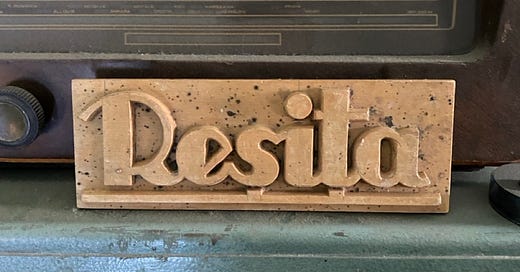


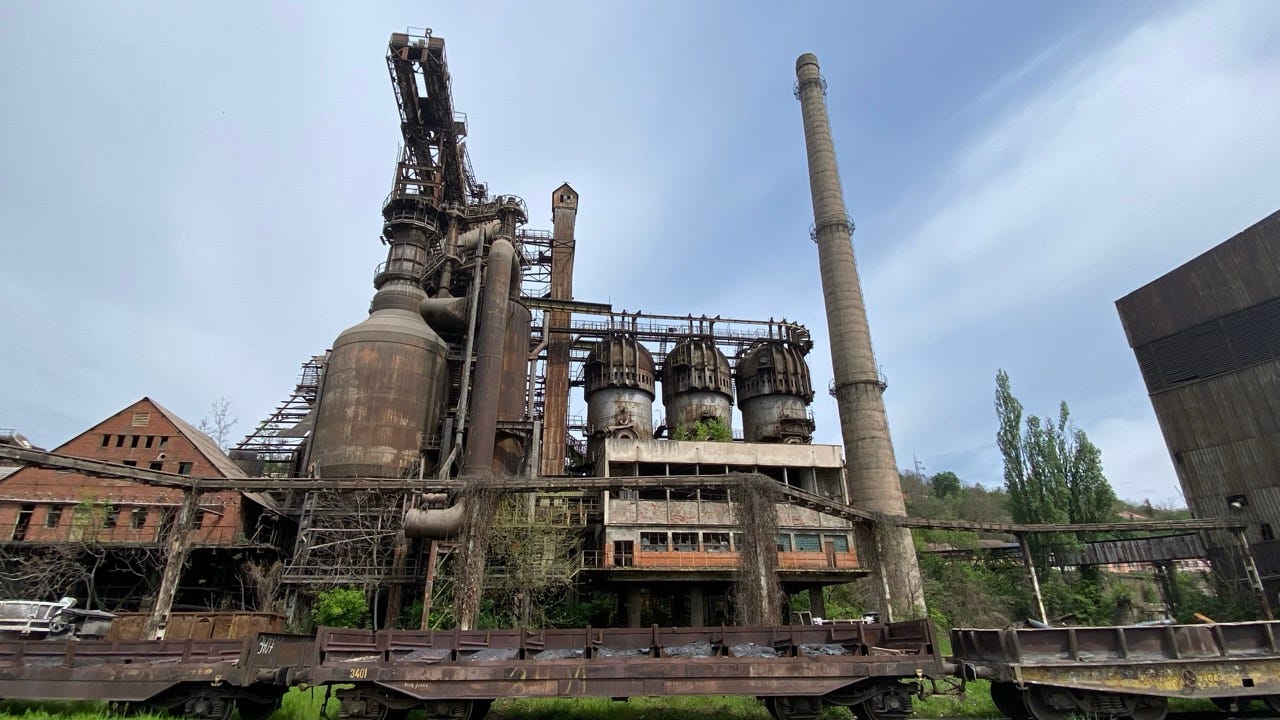
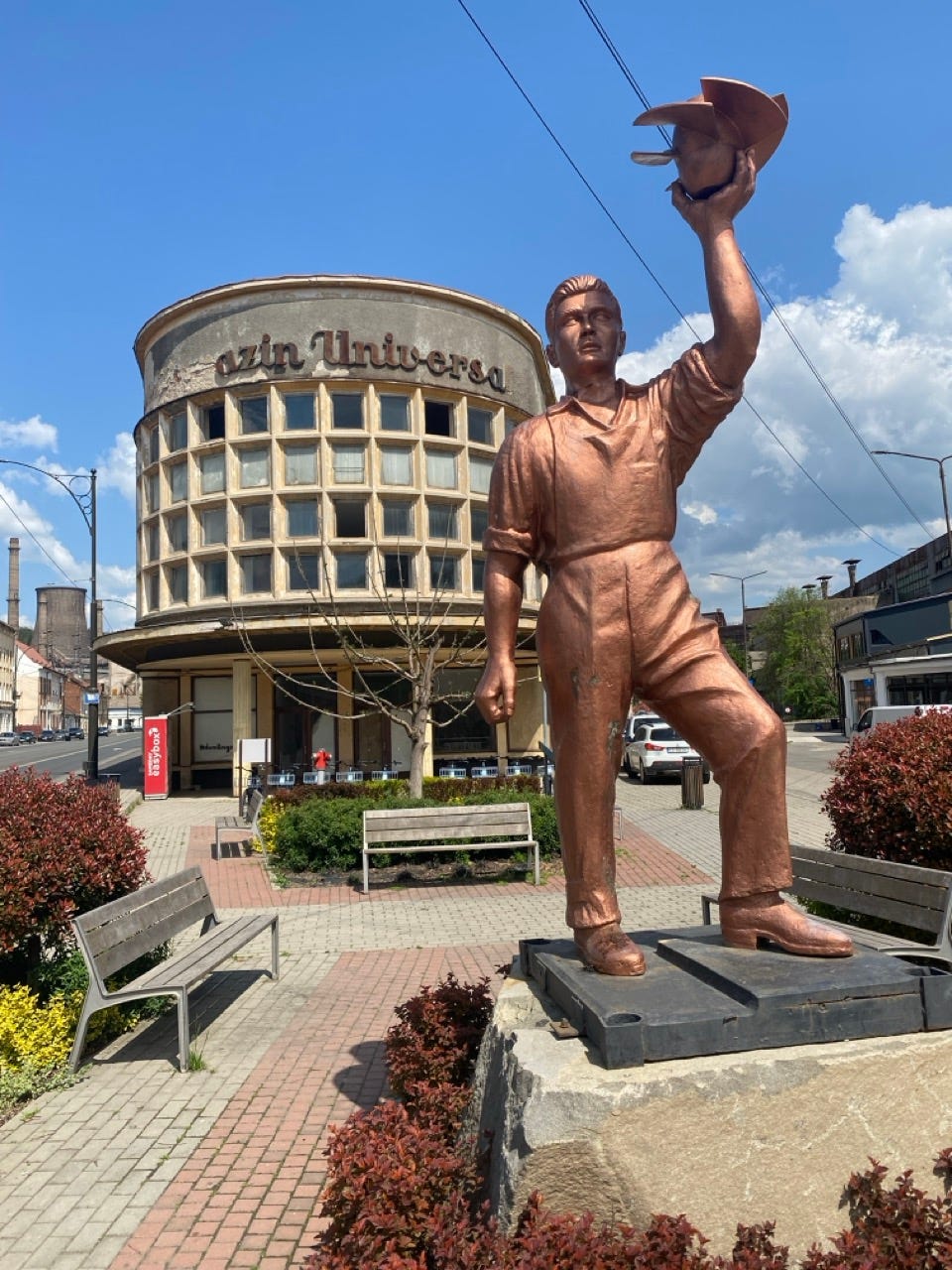
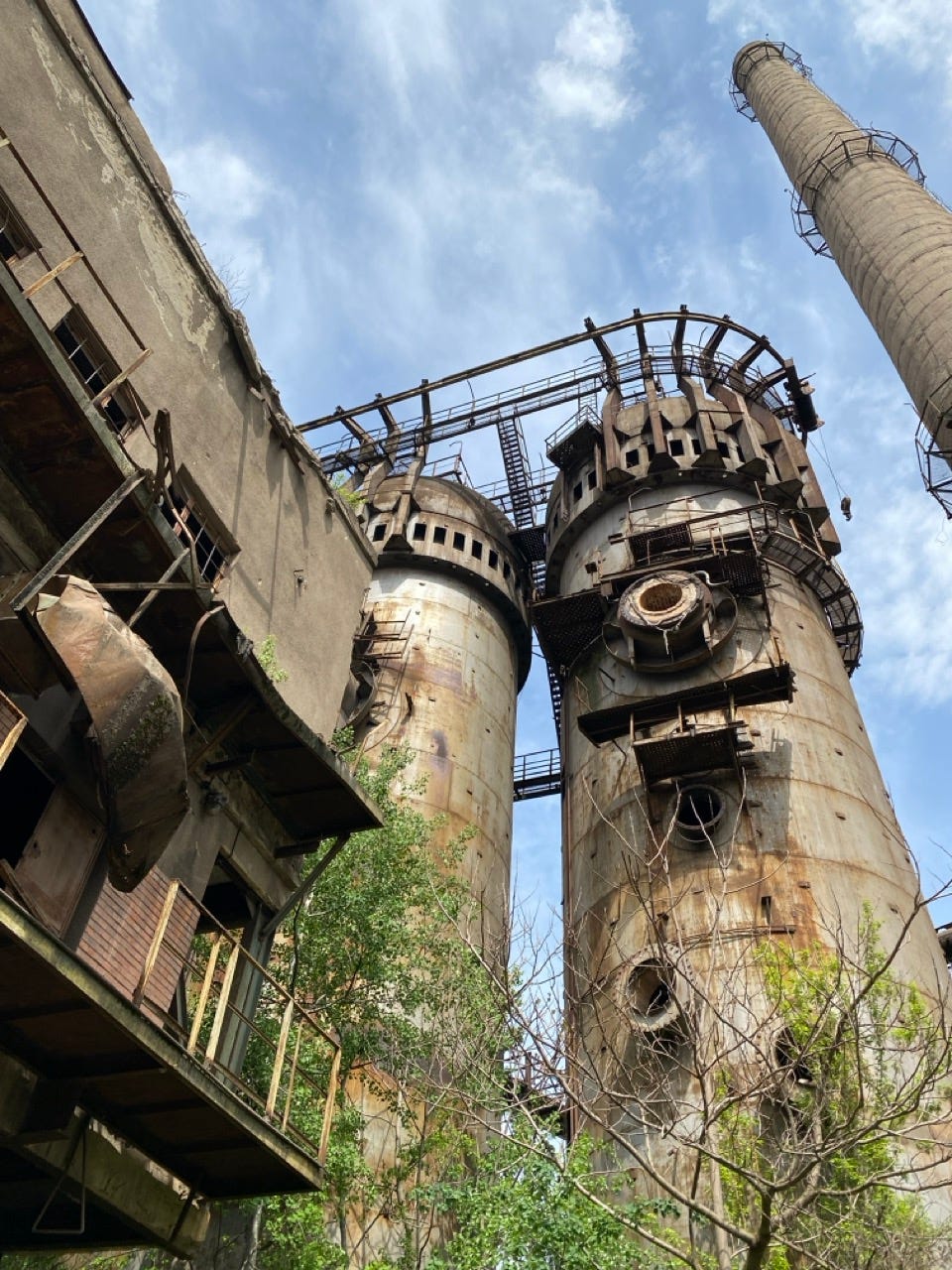
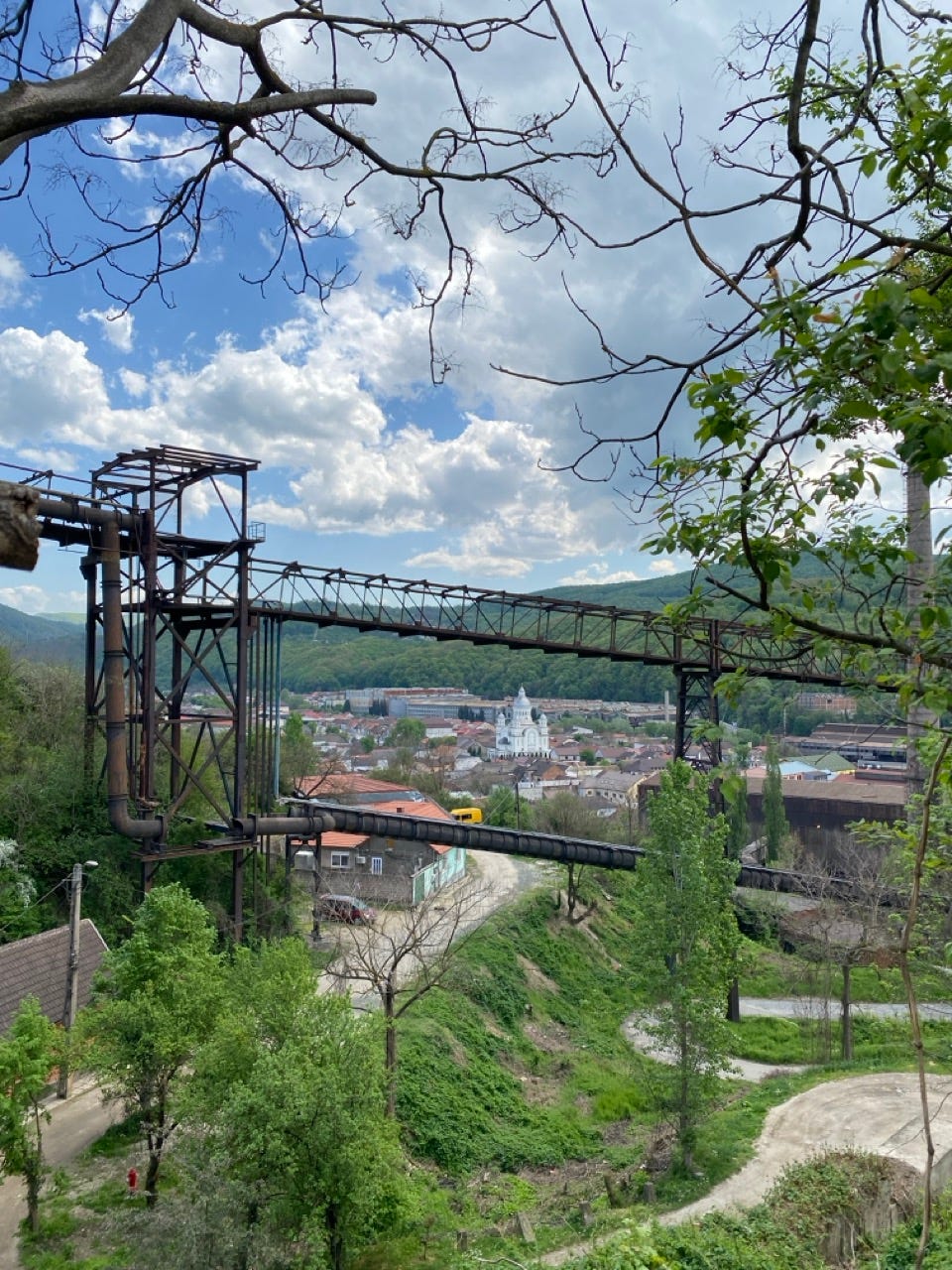

An example of what can be done to bring new life into the old furnace: https://www.luxtimes.lu/yourluxembourg/luxembourgguide/architectural-icon-belval-blast-furnaces/1321479.html
Being born and having lived in Galati (another industrial steel city, with a slightly different fate than Resita) for nearly 18 years, I connect so deeply to this story. Yet in the past few years I have seen how these industrial monsters that used to live in the outskirts of towns can be part of daily life, sometimes centring and giving identity to a community.
Colecția de la Albaaa trebuie adăugată aici 🥰